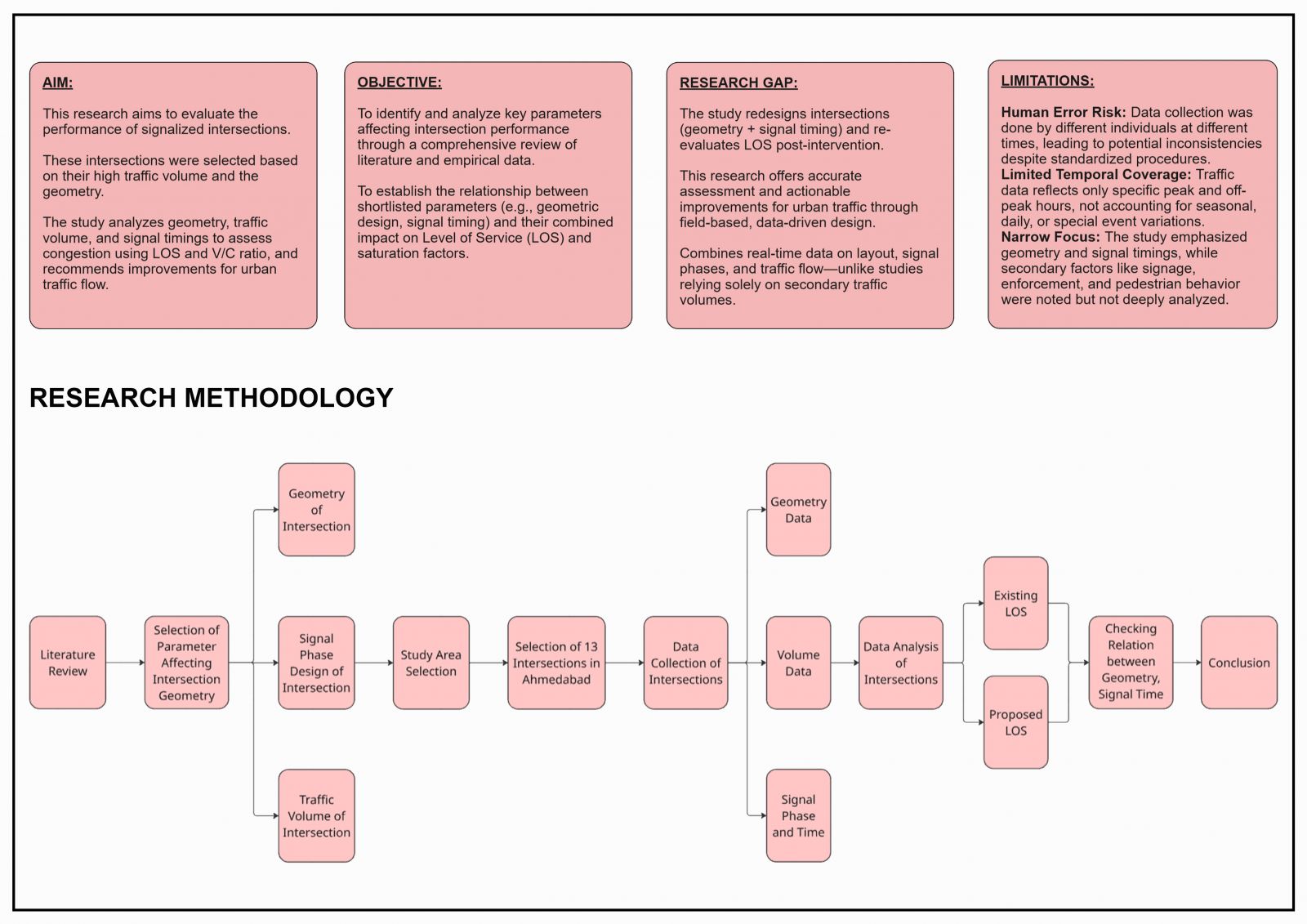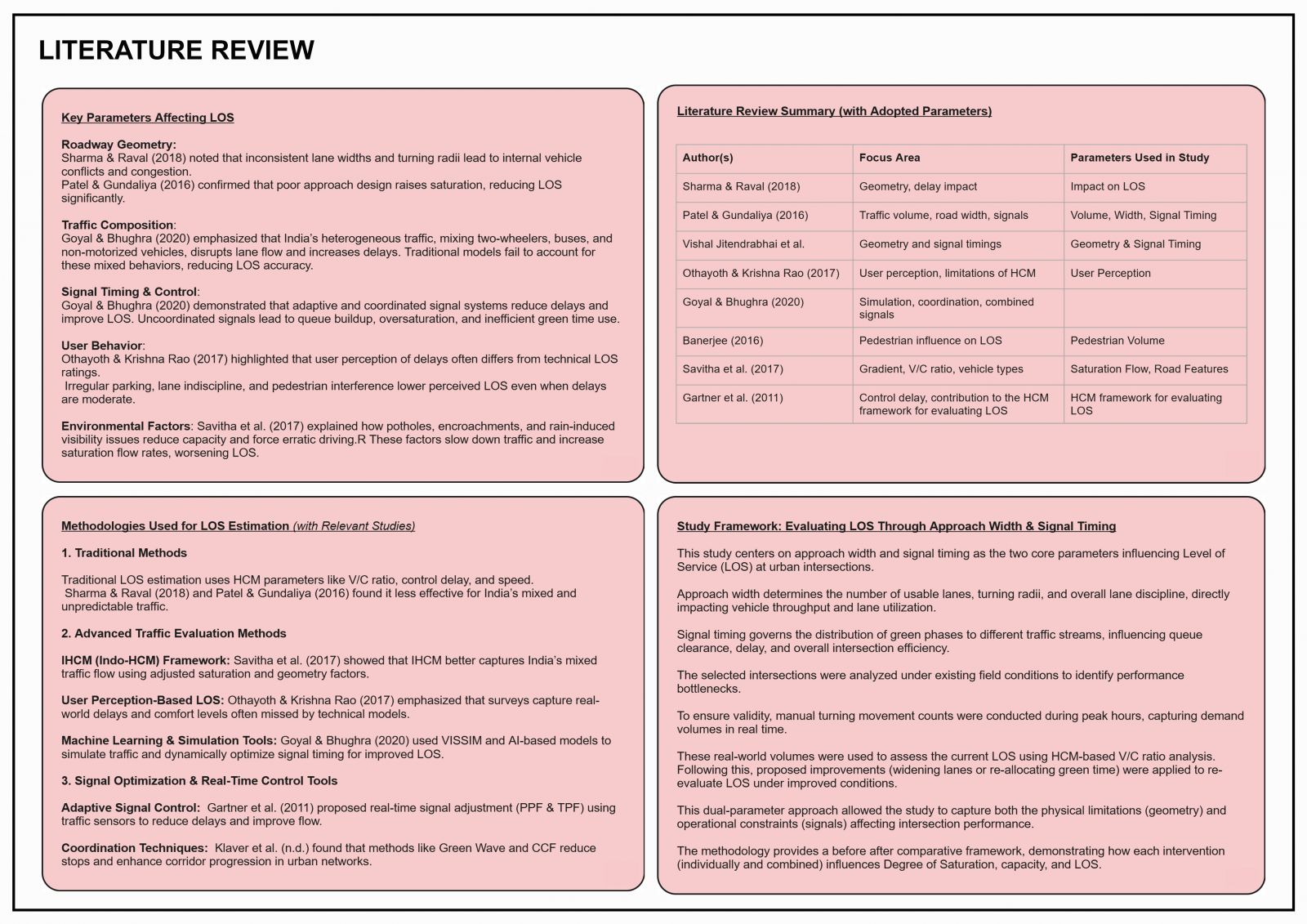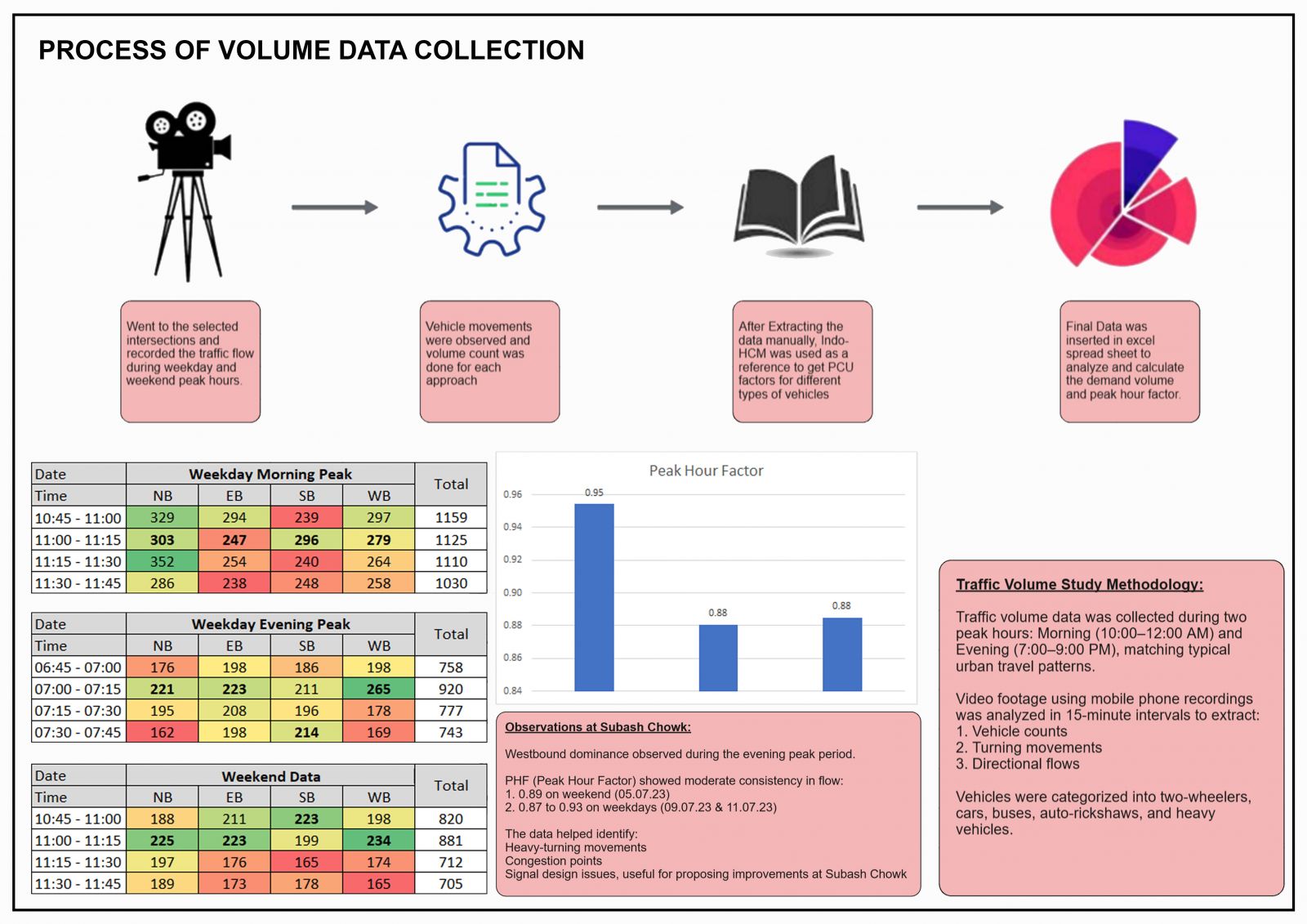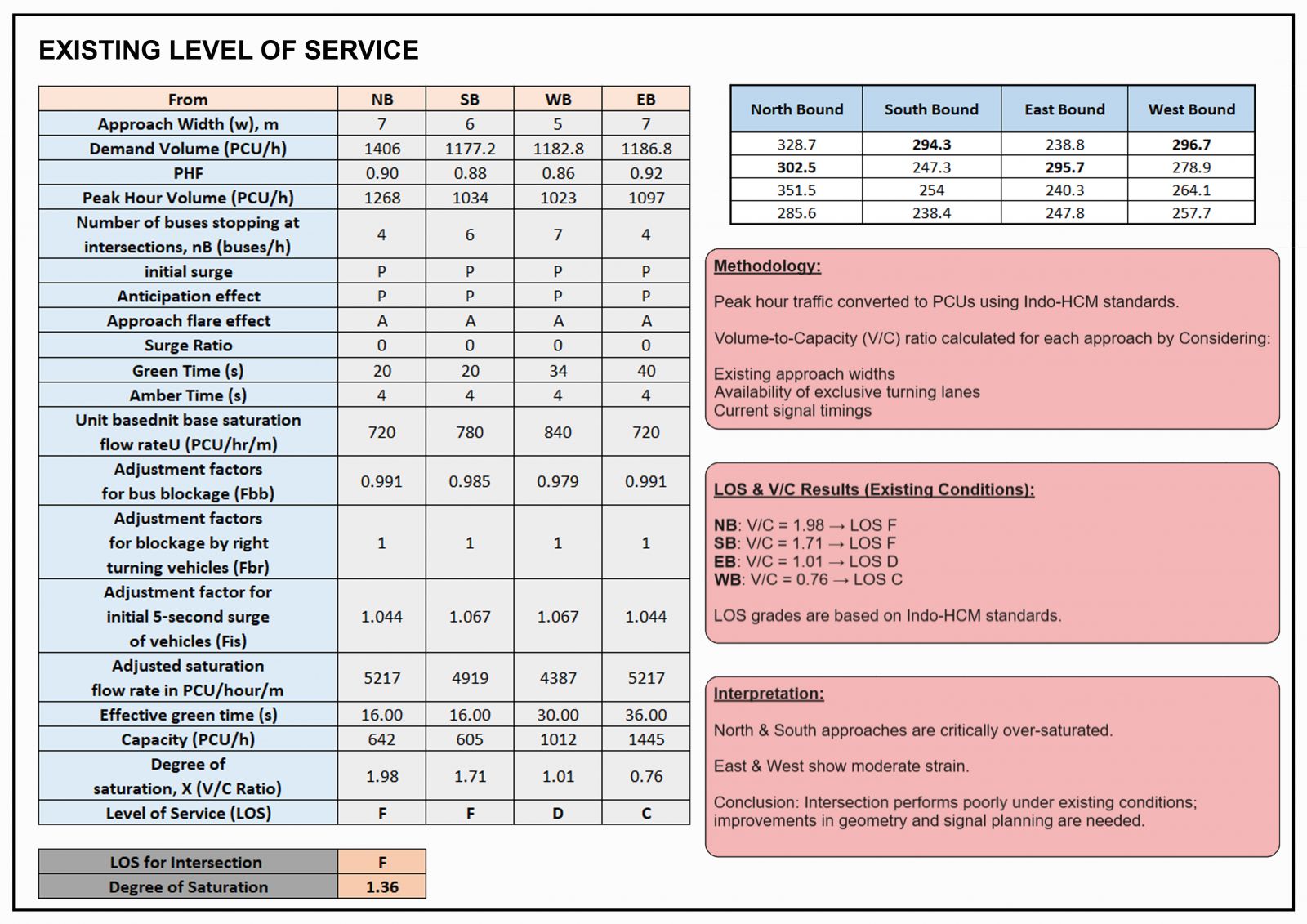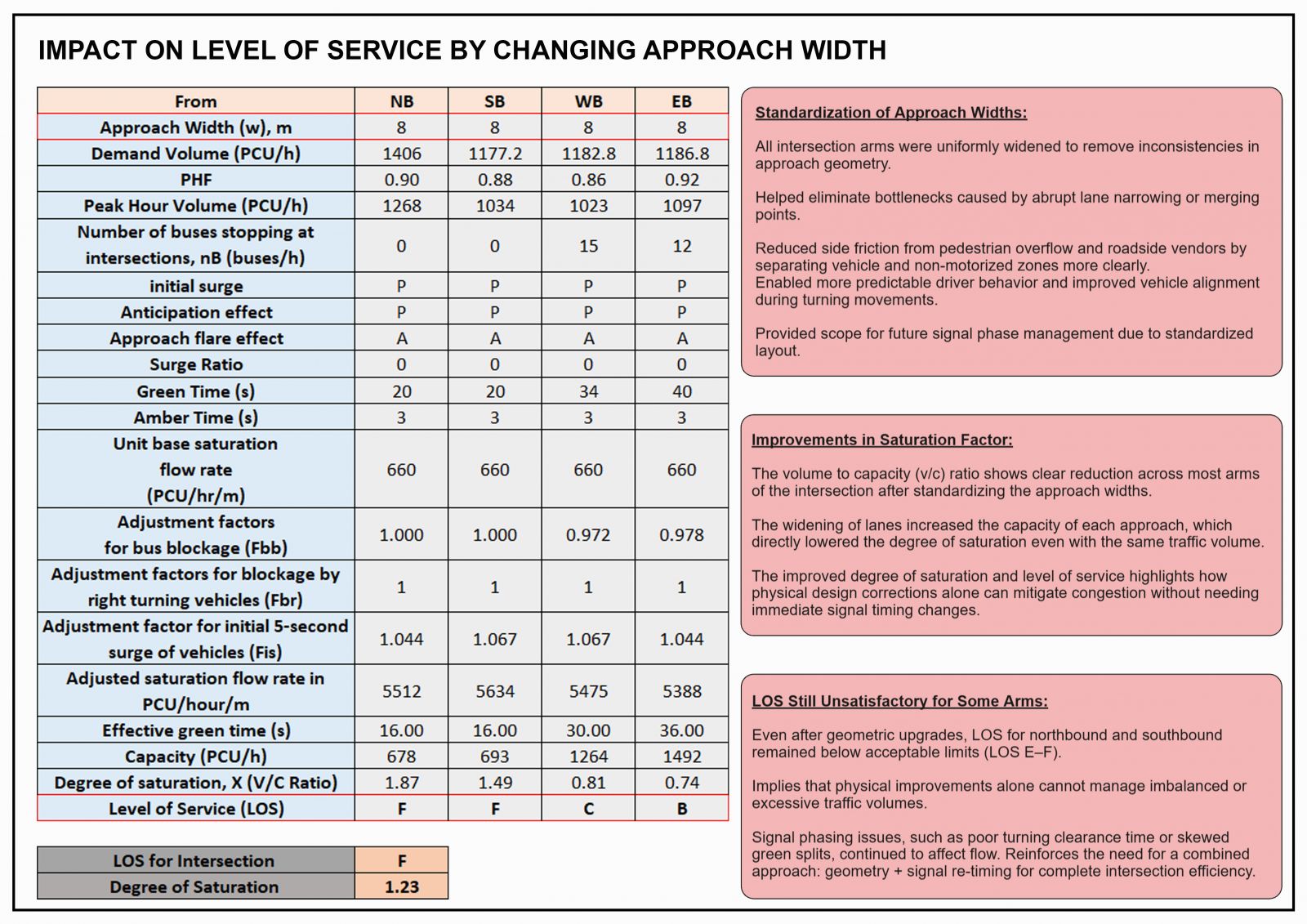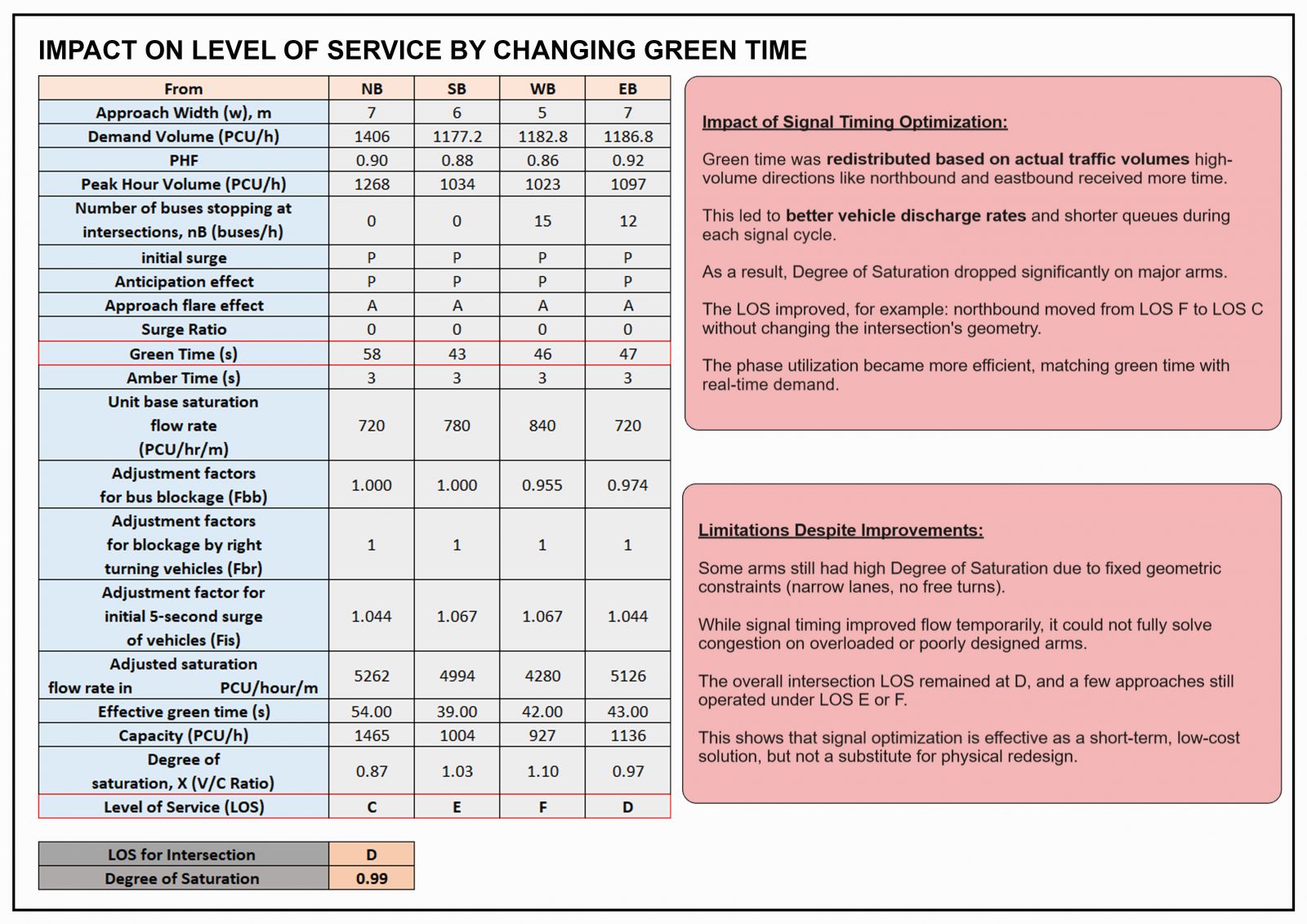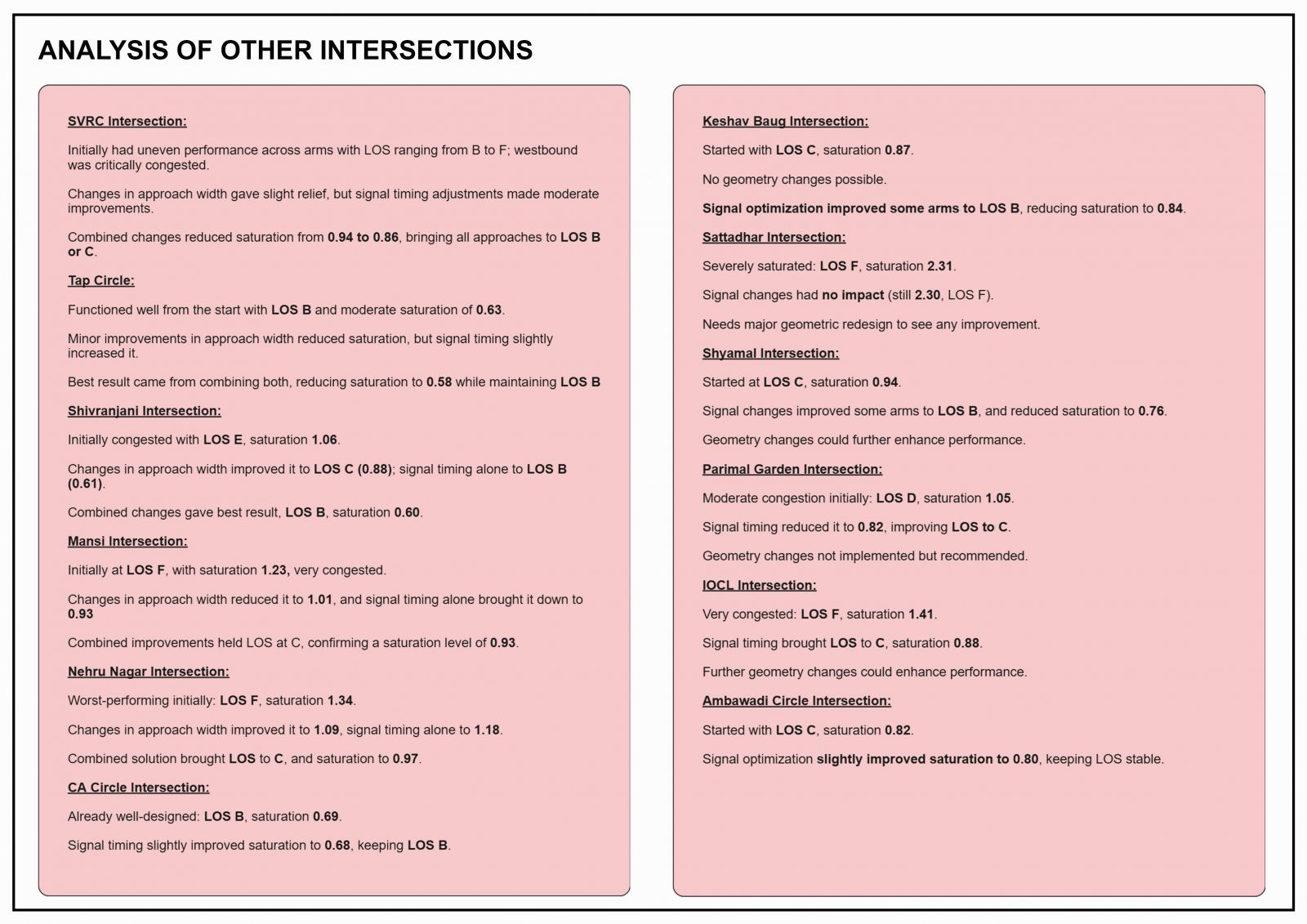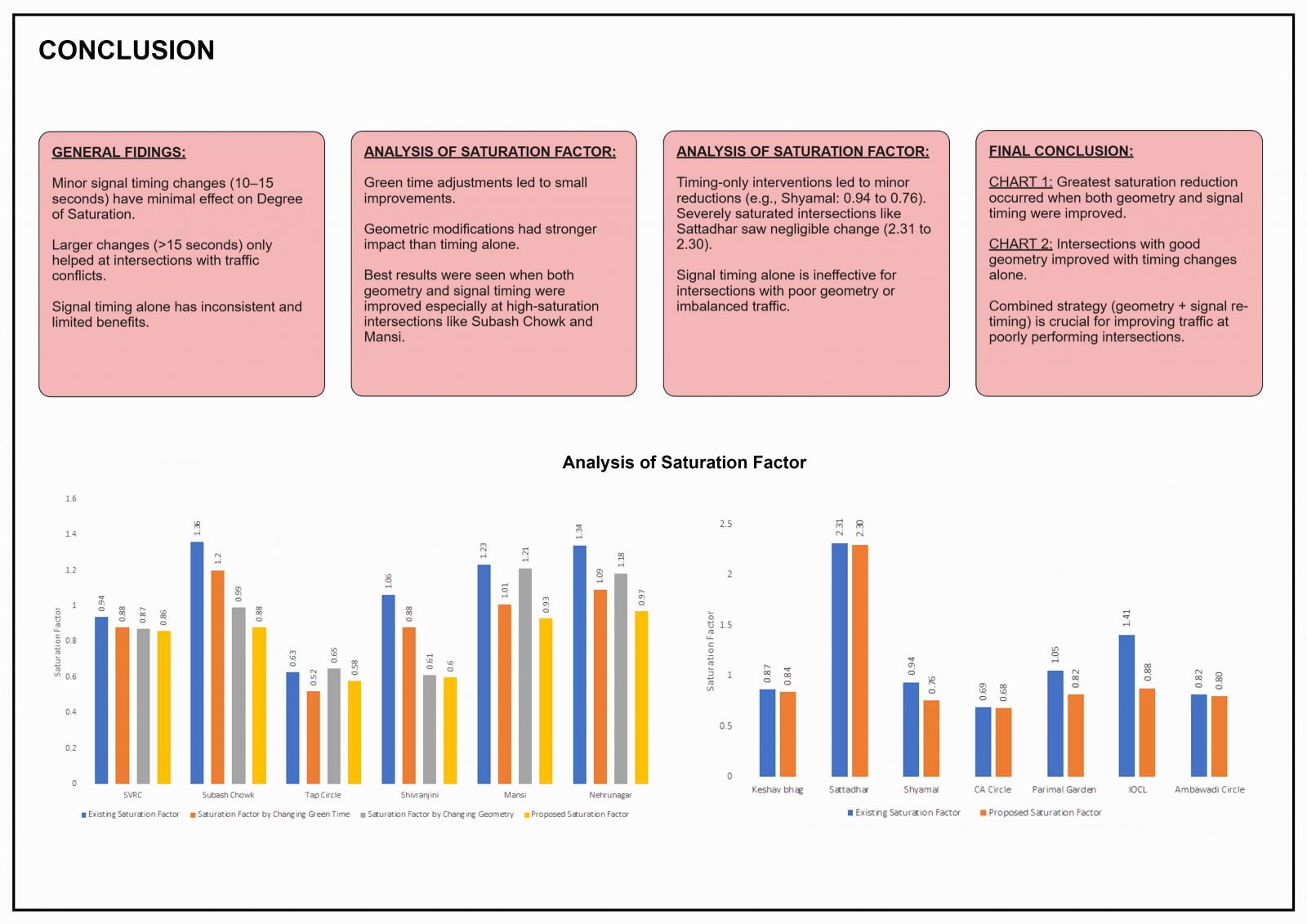Your browser is out-of-date!
For a richer surfing experience on our website, please update your browser. Update my browser now!
For a richer surfing experience on our website, please update your browser. Update my browser now!
This study evaluates the operational performance of 13 signalized intersections in Ahmedabad using the Level of Service (LOS) framework defined in Indo-HCM (2017). The intersections, selected based on frequent commuter experience and observed traffic issues, were analyzed through a combination of DGPS-based surveys of approach widths, peak-hour traffic volume recordings, and manual signal timing assessments. LOS and Volume to Capacity (V/C) ratios were calculated to assess the efficiency and congestion levels of each intersection. The research further investigates how key factors, including approach width, signal timing, and traffic composition, impact intersection performance. A detailed case study of Subhash Chowk illustrates the methodology and outcomes, comparing the effects of individual and combined interventions on LOS. Findings indicate that a combination of approach width improvements and signal timing adjustments yields the most significant performance gains. The study offers practical insights for urban traffic management and supports data-driven planning for improving signalized intersections under heterogeneous traffic conditions.
